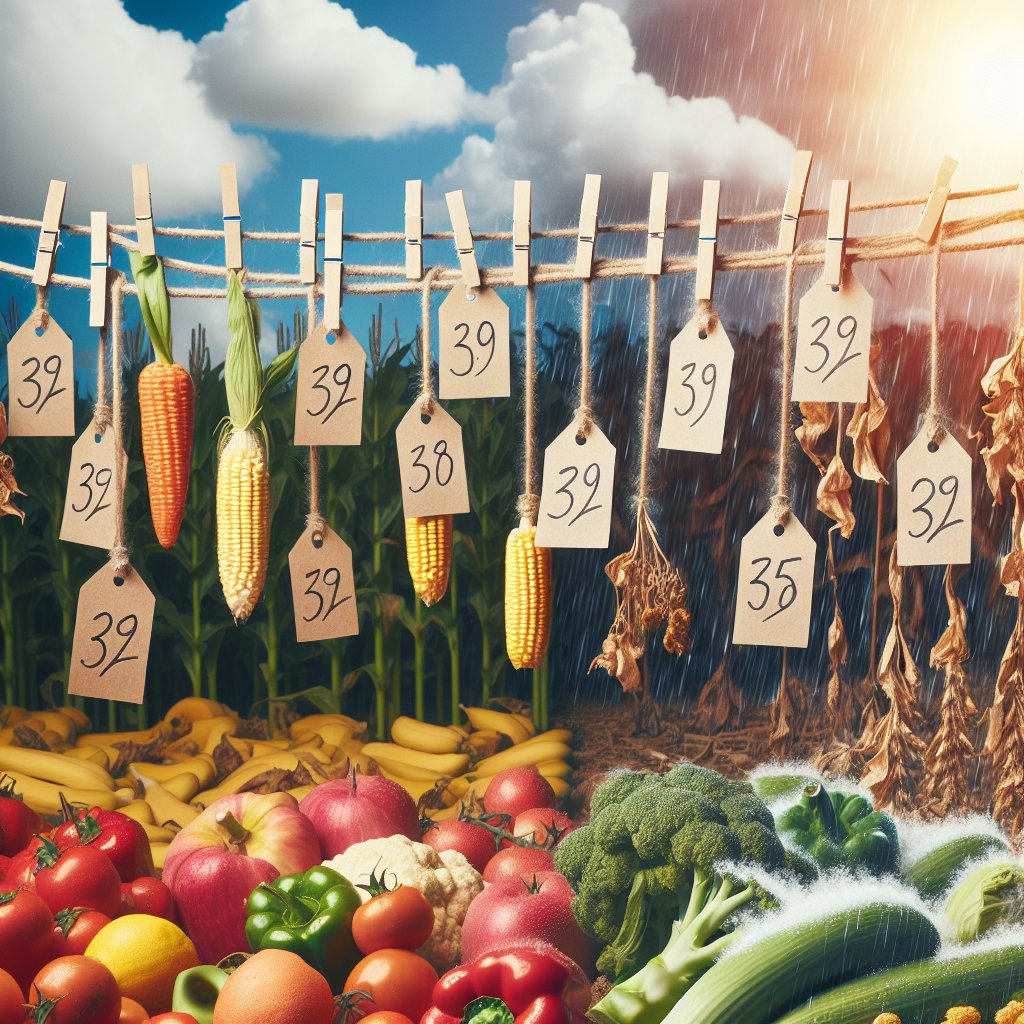The impact of climate change on agricultural product prices is a pressing issue that affects farmers, consumers, and economies worldwide. As global temperatures rise and weather patterns become increasingly unpredictable, the agricultural sector faces numerous challenges that can lead to fluctuations in the prices of essential food items. This article explores the various ways in which climate change influences agricultural production and, consequently, the pricing of agricultural products.
Understanding Climate Change and Its Effects on Agriculture
Climate change refers to long-term alterations in temperature, precipitation, wind patterns, and other elements of the Earth’s climate system. These changes are primarily driven by human activities, such as the burning of fossil fuels, deforestation, and industrial processes, which increase the concentration of greenhouse gases in the atmosphere. The agricultural sector is particularly vulnerable to these changes due to its reliance on specific climatic conditions for crop growth and livestock production.
Temperature Increases and Crop Yields
One of the most direct effects of climate change is the increase in average global temperatures. Higher temperatures can lead to reduced crop yields, as many staple crops, such as wheat, rice, and maize, have optimal growing conditions that are sensitive to temperature changes. For instance, studies have shown that for every degree Celsius increase in temperature, wheat yields can decrease by approximately 6%. This decline in productivity can lead to lower supply levels, driving up prices for consumers.
Altered Precipitation Patterns
In addition to rising temperatures, climate change has also resulted in altered precipitation patterns. Some regions may experience increased rainfall, leading to flooding and soil erosion, while others may face drought conditions that severely limit water availability for irrigation. These changes can disrupt planting and harvesting schedules, further impacting crop yields. For example, prolonged droughts can lead to significant reductions in corn and soybean production in the United States, which can have ripple effects on global markets.
Pest and Disease Pressure
Climate change can also exacerbate pest and disease pressures on crops. Warmer temperatures can expand the range and lifecycle of pests, leading to increased infestations. Additionally, changing climatic conditions can create favorable environments for pathogens that affect crops. Farmers may need to invest more in pest control measures, which can increase production costs and, consequently, the prices of agricultural products.
The Economic Implications of Climate Change on Agricultural Prices
The economic implications of climate change on agricultural prices are multifaceted. As production costs rise due to the need for more resilient farming practices and technologies, these costs are often passed on to consumers in the form of higher prices. Furthermore, the volatility of agricultural prices can lead to uncertainty in the market, affecting both farmers and consumers.
Market Volatility and Price Fluctuations
Climate change contributes to market volatility, as unpredictable weather events can lead to sudden changes in supply. For instance, a severe drought in a major grain-producing region can lead to a sharp increase in prices, while a bumper crop in another area can temporarily lower prices. This volatility can make it challenging for farmers to plan their production and for consumers to budget for food expenses.
Global Trade and Food Security
The interconnectedness of global agricultural markets means that climate change impacts in one region can have far-reaching effects on food security worldwide. Countries that rely heavily on imports for staple foods may find themselves vulnerable to price spikes caused by climate-related production issues in exporting countries. This situation can lead to increased food insecurity, particularly in developing nations where access to affordable food is already a challenge.
Adaptation Strategies and Resilience Building
To mitigate the impacts of climate change on agricultural prices, farmers and policymakers must adopt adaptation strategies that enhance resilience. These strategies may include investing in drought-resistant crop varieties, improving irrigation efficiency, and implementing sustainable farming practices that enhance soil health. By building resilience within the agricultural sector, it is possible to stabilize production levels and, in turn, prices.
Conclusion
The influence of climate change on agricultural product prices is a complex issue that requires urgent attention. As temperatures rise and weather patterns shift, the agricultural sector must adapt to ensure food security and economic stability. By understanding the various ways in which climate change affects agricultural production and prices, stakeholders can work together to develop effective strategies that mitigate these impacts and promote a sustainable future for agriculture.




